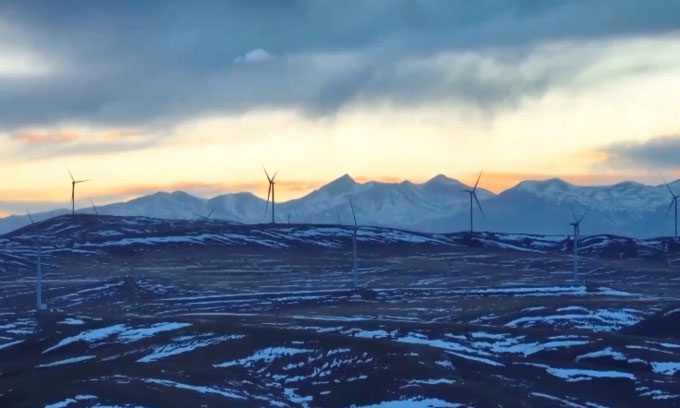The wind farm at an altitude of 4,650 meters commenced operations in Nagqu Town, Seni County, Nagqu City, Tibet Autonomous Region on January 1.

Wind farm in Nagqu Town, Seni County, Nagqu City, Tibet Autonomous Region on January 1, 2024. (Photo: CMG)
Wind farms built at altitudes of 3,500 to 5,500 meters are considered ultra-high, according to the China Energy Investment Corporation, the developer of the wind power project in Nagqu. The world’s largest ultra-high wind farm has a capacity of 100 MW, covers more than 140,000 square meters, and consists of 25 wind turbines. The facility is designed to provide 200 million kWh of electricity annually to 230,000 residents in Nagqu City.
Due to its extreme altitude, the wind farm must withstand the harsh climatic conditions of the plateau. “In the initial stage, we used a smart wind power platform to accurately assess wind measurement, site selection, and wind resources, which helped us develop the farm’s design. With stability control technology, we have overcome issues caused by high altitude, such as low wind energy conversion efficiency and reduced turbine performance,” said Hu Jiansheng, the project leader for the 100 MW wind farm.
Additionally, wind turbines face severe weather phenomena such as hail, lightning, and are subjected to damage from UV rays, drastic temperature changes, and frequent erosion due to wind, sand, rain, and snow. Therefore, the blades of the turbines require very high quality. Hu noted that the project team invented a special coating spray technique that prevents the paint from becoming too dry and brittle, which helps protect the external parts of the wind turbines.
Before commencing operations, staff from the China Energy Investment Corporation conducted a final inspection of the wind turbines to address issues caused by the high altitude. “All turbines here have been debugged, and all main equipment and lines are energized. I am very happy and excited to see the station fully integrate into the power grid,” shared Qin Min, the project manager for the 100 MW wind farm, on January 1.


















































